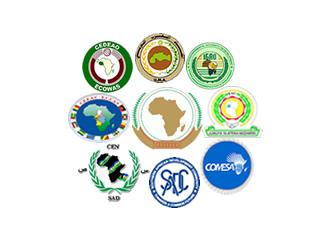Key Pillars of Africa’s Regional Integration

The Assembly of the African Union have adopted and are pursuing regional integration as an overarching continental development strategy. In 1991, African Heads of State and Government signed the Treaty Establishing the African Economic Community (the Abuja Treaty), which provides the guiding principles and goals, and a region-wide framework to strengthen the integration agenda. The vision at the continental level is to achieve an African Economic Community by the end of six successive stages. The rationale behind the six-phased approach is that the integration vision should first consolidate at the regional level, through creating and strengthening the regional economic communities, which would eventually merge into the African Economic Community. The illustration below provides a preview of this process.
Abuja Treaty Establishing the African Economic Community
Phases | Duration | Key milestones |
First stage | 1994–1999 |
|
Second stage | 1999–2007 |
|
Third stage | 2007–2017 |
|
Fourth stage | 2017–2019 |
|
Fifth stage | 2019–2023 |
|
Sixth stage | 2023–2028 |
|
Source: ECA adaption of the Treaty Establishing the African Economic Community (June, 1991).
There are eight regional economic communities recognized as the building blocks of the African Union. The following communities are expected to serve their member States with the implementation of the regional integration agenda:
- Arab Maghreb Union
- Community of Sahel-Saharan States
- Common Market for Eastern and Southern Africa
- East African Community
- Economic Community of Central African States
- Economic Community of West African States
- Intergovernmental Authority on Development
- Southern African Development Community
The path to African integration has been marked by a series of major initiatives and political decisions to accelerate it and to integrate variables of new imperatives in international economic relations. The Abuja Treaty stipulates that African States must endeavour to strengthen their regional economic communities, in particular by coordinating, harmonizing and progressively integrating their activities in order to attain the African Economic Community. To measure the process of integration, the Observatory on Regional Integration in Africa has identified five key pillars derived from treaties and protocols of the African Union and the regional economic communities:
a) Trade and market integration
b) Macroeconomic policy convergence
d) Peace, security, stability and governance
e) Harmonization of sectoral policies